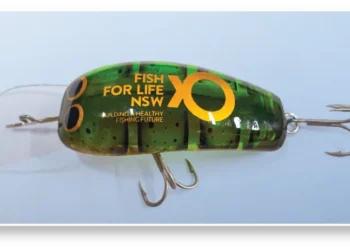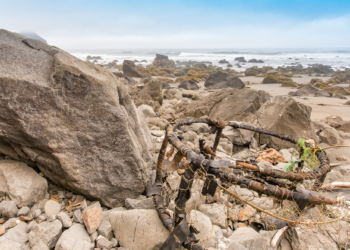
IT’S good to see a whole new bunch of converts starting to pen pieces in praise of the humble luderick. For some of us, luderick fishing has been a lifelong passion and for some an obsession. In previous eras, a surprising number of anglers fished for nothing else, for several reasons. First, the fish’s fighting qualities. For their size, they really do perform well, particularly as they need to be targeted with light tackle to ensure consistent catches. Sure, occasionally they’ll take a bait or lure aimed at something else, but in the main to be consistently rewarded you need to fish light leaders, generally in the 2-3 kg range. Second, their distribution. They can be caught on ocean rocks, in lakes and lagoons and from harbour wharves and break walls. Third, their feeding habits, which are predominately tide versus time related. They can be caught literally at any time of day. Fourth, the gear used to target them can be reasonably inexpensive and the bait’s free, major issues in days past when money was tighter and tackle relatively more expensive. And fifth, properly prepared they are very good eating. Maybe not in coral trout class, but way better than a yellowfin bream.
While these days some chase luderick with flies and lures, and others employ ISO tackle or light spin gear, most specific luderick fishing is still done with essentially the same style of rigs and gear used 120 years ago. An article in a Sydney paper in 1907 described the blackfish angler as “an enthusiast almost to the crank stage” and noted that the Redditch tackle company in England had already designed a special hook for them (size 9). Rods were described as long and whippy and lines and leaders light, although made of cane, silk and gut respectively. A 1918 “how to fish” guide suggested blackfish were “more fished for than any other fish”.

The Fisho website and many printed fishing guides contain plenty of advice on how to catch luderick or blackfish. OK, the current approved name is luderick, as determined in 1947, but as noted in a previous piece many anglers and fish markets still refer to them as blackfish. The history of their name is a tale in itself.
The species was identified and named way back in the 1800’s as blackfish. It was given the scientific name Girella tricuspidata. But in 1846 a naturalist named Richardson identified a new species, the ludrick, which looked a lot like a blackfish, but had a much wider mouth with chisel-shaped rather than three-pointed teeth. For about 60 years blackfish and luderick happily co-existed in the scientific world and there are detailed historic illustrations of the ludrick, Girella simplex, even on today’s internet.
In 1908, David Stead, the NSW Board of Fisheries naturalist, published his “Edible Fishes of NSW”. In it he announced that the ludrick had been determined not to be a separate species but was in fact a female form of the blackfish which for some still unknown reason develops a chisel-toothed rather than tricuspid-toothed variation. So, the name ludrick disappeared for around 40 years, only to be re-born with a spelling variation “luderick” in 1947. Whatever you call them, they’re a great fish.
















